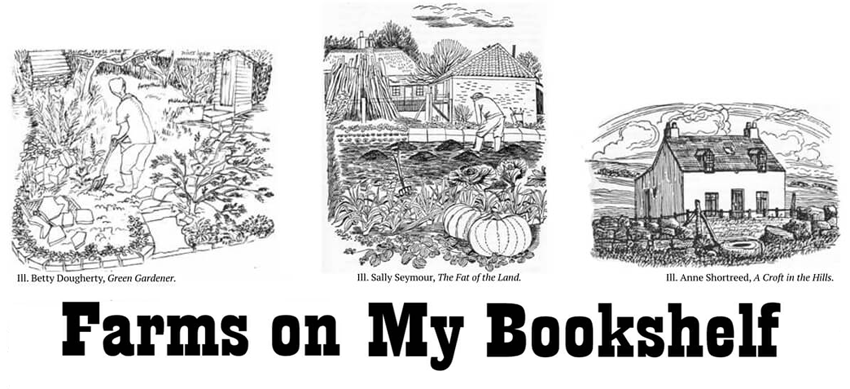As described above Anne buys a house on Soay (which was where Lilian Beckwith lived) on a whim, having little idea what she is putting herself in for. When she was seven she wrote an essay which began: 'When I grow up I want to live in the middle of nowhere". Well, this is it. Having little idea of what she is going to live on (apart from some savings), she sells her house and moves north. As she says in a newspaper interview : "I was naive: I thought I would come here, live in a lovely little cottage, look at the view, paint pictures, sell them, and just enjoy the ambience of the place. I didn’t really understand anything at all"
Kind people help her move her stuff to the island and introduce her to how things work (the mailboat, which also carries all supplies she has to order, only calls once a month). It is not the first time she has to depend on the kindness of strangers. Prime example of course is Robert Cholawo, who succeeds in having a navy helicopter move her piano to the island. She later marries Robert.
I liked the first chapters of the book best: Anne describes how she sets up home and gets to know the island and the people who live there, among them the couple Tex and Jeanne Geddes (Tex was Gavin Maxwell's partner in his shark oil factory, which he set up in the late 1940's). She often goes out fishing with Tex. Anne's house has no electricity, water comes from a well.
Anne and Robert organize an exhibition on the island of Muck, to which both contribute paintings. Selling some of them brings in some money as does selling winkles which she picks on the shore. She becomes more involved in island life, helping Jeanne and Tex round up sheep and assisting with slaughter and butchering. I was very surprised to read that she had not had one thought about being self-sufficient (well, she did say she was naive ... ) and only starts growing vegetables because her neighbours convince her to. To her suprise this is a success.
Over the years she adjusts to living on the island and to looking after herself. I would have loved more details on day to day living and a map of the house and the island. Instead, a large part of the book is devoted to stories about the boats she uses, which I must confess I did not find very interesting.
When Anne comes to live on the island there are 17 inhabitants. From the early nineties the population starts to decline and when she writes the book there are only three people living there. A recurring theme in the books in this blog: living this way is hard work. "People often ask us how we fill our time. Unless you actually live on Soay it is impossible to understand what is required to maintain a decent and comfortable lifestyle on an under-developed island. It's a bit like constantly spinning plates on poles. You have to run from one to another to keep them going before they fall off. " But: "Today, as I write this on a cold, blustery evening sitting by the wood-burning stove, I think of how priviliged, blessed and lucky we have been to have had the chance to live out so much of out lives on such a magical and peaceful island. Even if it had to end tomorrow, we could not have asked for more."
Here is a very nice podcast where you can listen to Anne. This dates from 2021, so it would seem she and Robert are still on the island.









